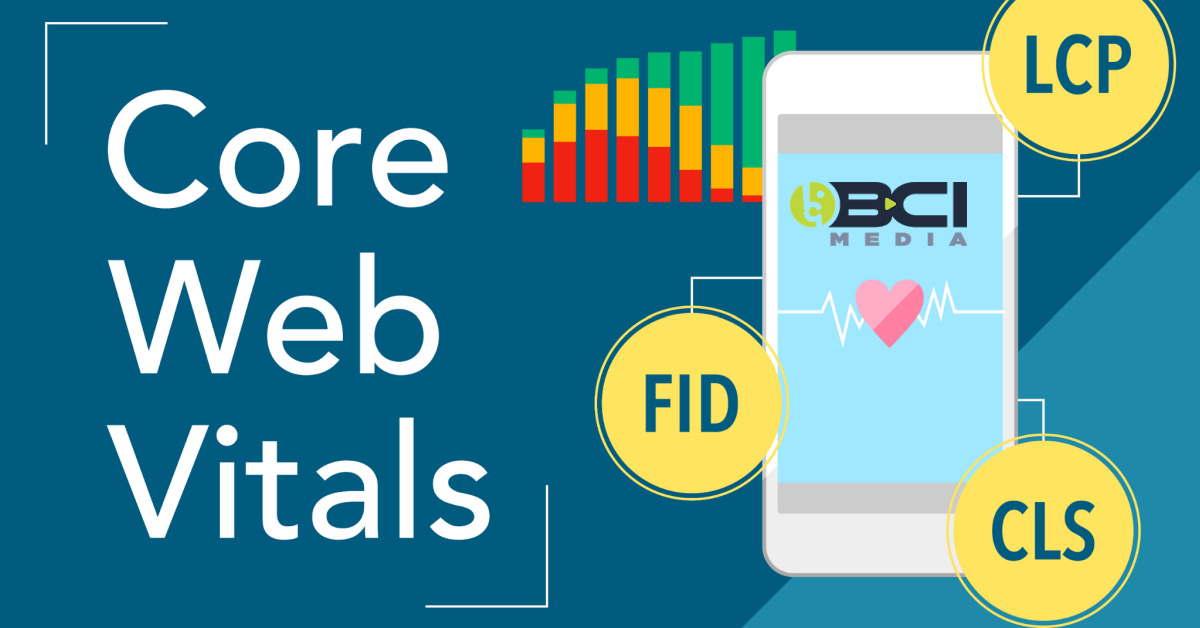Google just added a feature to its search engine –
one that could affect your bottom line.
Remember when webpages loaded line by line? Yeah, good riddance to the days of dial-up internet. Today, we enjoy the instant gratification of high-speed internet, and users expect instant results. Nearly 93% of users will leave a website that doesn’t load properly, and over 53% of mobile users will abandon a site that takes more than three seconds to load.
No one wants to waste time on a poor experience. To help elevate the online experience, Google released its Core Web Vitals, which will be included in Google Search ranking beginning May 2021.
What Does That Mean for Your Business?
If a page load time increases from one second to three seconds, the bounce rate increases 32%. If page load time increases to six seconds, the bounce rate increases by 106%. (Google) A high bounce rate can hurt a business’s bottom line. If a site loads too slow, businesses risk potential customers jumping to a competitor’s site for a better experience. Furthermore, beginning next month, Google will start to penalize websites that do not comply with Core Web Vitals.
What Are Core Web Vitals?
Core Web vitals are a set of metrics that can help website owners measure the speed, visual integrity and responsiveness of their site, according to the team of experts at BCI Media. While a well-designed website looks like it loads instantaneously, webpages actually load piece by piece. Each form, image and headline is visible at a different time, and the speed of each element contributes to the overall load time. It’s important to know the website’s performance statistics, both to please impatient visitors and to meet Google’s Core Web Vitals thresholds.
First, let’s talk about the metrics that make up the Core Web Vitals:
- Largest Contentful Paint (LCP).
This metric measures the loading performance of the largest piece of content on any given page from when a user requests the URL. This is normally an image large text block or video file. Google recommends keeping your LCP under 2.5 seconds.
- First Input Delay (FID)
This measures the time between an action like clicking a button to when the browser responds to that action. The FID measurement comes from whatever element is clicked first, turning the page from static to interactive. Responsiveness is crucial to making a good first impression with visitors. Google recommends sites keep the FID under 100 milliseconds. - Cumulative Layout Shift (CLS)
This measures all of the layout shifts that occur across any webpage. It’s scored from zero (no shifting) to a positive number (more shifting). Common causes of shifting would be dropdown banner ads, pop-up chats or images that cause a text block to move. These shifts contribute to a negative user experience. Google recommends sites aim for a CLS score of 0.1 or less.
How to Check Your Core Web Vitals
Walk through these steps to analyze your website:
- Enter the website’s URL into Google’s PageSpeed Insights tool.
- Click ‘Analyze.’
- Check your performance report.
The purpose of the Core Web Vitals report is to provide insight into page performance. If you can learn what to improve on the pages, you’ll create a better user experience and be rewarded by Google with better rankings. It’s what we call a win-win. While reading the report, you will see that the labels “Poor,” “Needs Improvement” and “Good” are given for the URL on both mobile and desktop. Users can toggle between the two in the upper left-hand corner of the page. If the URL doesn’t have enough data for a specific metric, it will be omitted from the report. Once the URL has enough data, the page status will reflect the metric that performs the worst.
The Future of SEO
With Google shifting focus away from server-level metrics and to the user experience (UX) a strong SEO plan is more important than ever. Improving a site’s Core Web Vitals may seem like a daunting task. If you’re feeling overwhelmed, BCI Media is here to help with all of your SEO needs. Our team can handle onsite and off-site as well as technical SEO. We also provide web hosting and SSL Certificates as well as complete web design. Contact us today to make sure that your website is not affected next month when Google launches the Core Web Vitals Update.
